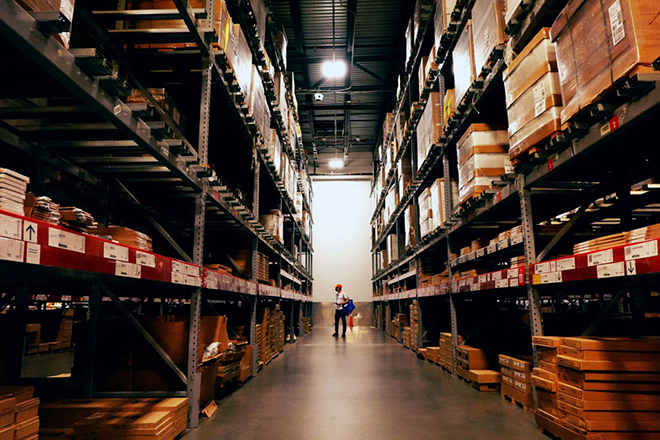
| IKEA was one of many companies to face shortages as COVID-19 caused major disruptions to supply chains. |
A slowdown in companies' sales of inventories may reflect a supply-chain "bullwhip" rather than a move to "just-in-case" sourcing strategies in the wake of COVID-19.
S&P 500 companies in the industrials, healthcare, information technology, utilities and consumer staples sectors all recorded lower rates of turning inventory into sales during the first quarter than prior to COVID-19, according to the latest data from S&P Global Market Intelligence. Typically, a low inventory turnover ratio — calculated by dividing the cost of goods by average inventory — indicates that a company has either slow sales or too much stock.
Shortages of key components battered production in sectors that depend on global supply chains running like clockwork and pushed inflation to new highs as consumers grappled with shortages. The fresh fall in inventory turnover may point to changes in approaches to stock levels in the wake of these massive supply chain distortions.
"Most sectors are showing low inventory turns relative to the same quarter of 2019, which would suggest a mixture of slowing demand as well as overstocking," said Chris Rogers, head of supply chain research at S&P Global Market Intelligence. "The latter is more likely given the impact of the 'supply chain bullwhip' — i.e. over-ordering in response to a period of price-elevated demand and shortages."

Global shock
Illness and restricted movement of people broke supply chains during COVID-19 as factories and ports closed around the world, disrupting the global shipping industry and delaying deliveries of components and goods.
The information technology sector has been particularly affected. The turnover ratio of S&P 500 companies in the sector declined to 3.1 in the first part of 2023 from a level of 4.6 in the first quarter of 2019.
"The information technology industry remains overstocked largely because of falling demand for PCs and phones," Rogers said. "Recent commentary from the semiconductor makers indicates they only expect a return of demand — and a reduction of inventories — later in 2023."
Intel Corp.'s inventory turnover ratio has declined to 2.35 from 3.71, while Motorola Solutions Inc.'s is down to 4.19 from 9.01. Meanwhile, Apple Inc., a company particularly exposed to China where there were extensive shutdowns, has been relatively unaffected with a ratio of 29.6 compared to 29.3 four years earlier.
The consumer discretionary sector has also seen a consistently lower turnover ratio, though preliminary data suggests that it recovered to 5.6 in the first quarter of the year, a 10-quarter high and a sharp increase from 4.5 at the end of 2022.
Yet a number of subsectors, including the automotive industry, are worse off.
General Motors Co. has seen its turnover ratio decline to 7.8 from 10.8 in that time, while the ratio has dropped to 9.2 from 11.5 for Ford Motor Co.
"[Automotive] firms are still trying to catch up after shortages ranging from semiconductors to door handles. There are also elevated inventories in durable goods include home appliances and furniture," Rogers said.
Supply chain stresses ease
Inflation exploded as supply was unable to meet demand as the world economy began to recover from COVID-19. The personal consumption expenditures index excluding food and energy, the Federal Reserve's preferred inflation gauge, rose to a peak of 5.4% in March 2022 from less than 1% in 2020.

Pressures on global supply chains are now less intense than normal, according to the New York Fed's global supply chain pressure index, which has fallen below the historical average.
"I think for now we’re seeing a lot of inventory land in the laps of companies who ordered last year and are seeing the first true signs of these better supply chains on their books," said James Pomeroy, global economist at HSBC.

While the old supply chains may have recovered, the political landscape has also changed. Companies are reacting to the economic rivalry between the U.S. and China by diversifying their sources, both from China to elsewhere in Asia as well as reshoring to the U.S. and broader North American Free Trade Agreement region to diversify suppliers and reduce the need to tie up cash in stock.
"The lesson for the future is that the unique nature of the shock allowed for such widespread problems to occur," said Bert Colijn, senior economist at ING. "We do deem it unlikely that similar broad-based shortages will return without a shock the size of the pandemic."
The true nature of how far companies have changed their supply chain management will become more apparent when they decide how far to rebuild inventories later this year if order volumes drop as expected.
"Given the disruptions firms have seen in the recent years, we expect more firms to want to hold more inventory to protect against potential shocks further down the line — moving from 'just in time' to 'just in case,'" Pomeroy said.



